The genus Palaeoloxodon : Valid or invalid?
the Saber Panther
'Palaeoloxodon antiquus', the great straight tusked elephant of the Pleistocene Eurasia has been a subject of recent proboscidean genetic researches that provided some intriguing information.
One earlier study indicated that the straight tusked elephant was genetically closer to the extant African forest elephant(Loxodonta cyclotis), more so than the latter is to the African savanna elephant(Loxodonta africana). A subsequent study(Palkopoulou et al., 'A comprehensive genomic history of extinct and living elephants', 2018) however, reveals a little more complicated genetic history of the straight tusked elephant in which it shared genetic affinities not only with the extant forest elephant but also with an ancestry population related to the woolly mammoth and another related to the common ancestor of savanna and forest elephants, with most of its ancestry derived from the latter.
This genetic complication is explained by possible elephantid hybridization events at some point in time and eventual gene flows. Both hybridization and isolation appear to have played huge roles in shaping up elephantid evolution/diversification.
But the fact remains that genetically, the straight tusked elephant was most closely, and very closely related to Loxodonta elephants, with L. cyclotis being the closest living relative.
Intriguing morphological affinities observed between palaeoloxodonts and Elephas may be because the former inherited genetic contribution not only from Loxodonta relatives but also from an ancestry related to the woolly mammoth, and this 'ancestor' probably had very Elephas like characters that were somehow being preserved in palaeoloxodonts.
On the other hand, a new morphometric study of recently recovered fossil molars of 'Elephas jolensis' from the late-middle Pleistocene deposits of Natodomeri, Kenya(Manthi et al., 'Late Middle Pleistocene Elephants from Natodomeri, Kenya and the Disappearance of Elephas in Africa', 2019) demonstrates that this ancient elephant belongs to the genus Elephas and either evolved from or represents the last stage of 'Elephas recki', a gigantic East African elephant that was formerly placed within Palaeoloxodon.
E. jolensis had a pan-African distribution, dental morphologies quite similar to those of E. recki and was a strict grazer just like its ancestor. The intensity and increased rate of climate fluctuation during the period may have prompted the demise of the specialist grazing lineage of E. recki-E. jolensis in favor of mixed feeding Loxodonta.
Now, if the straight tusked elephant was essentially one of phylogenetic variants of Loxodonta and African E. recki-E. jolensis were species of Elephas, isn't it the case that taxonomy of Palaeoloxodon must be viewed as invalid, since all other species traditionally classified under Palaeoloxodon possibly will be better fitted to either Loxodonta or Elephas as well? (I guess there may be possibility of some Eurasian 'palaeoloxodonts' even sharing gene flows from the local Asian elephant lineage)
Or, because of its unique genomic admixture(but only small percentage) from a mammoth ancestry, the status of Palaeoloxodon at least for Eurasian straight tusked elephants should be preserved? The fact that P. antiquus(and subsequently diverged Eurasian Palaeoloxdon species) probably emerged as admixed species with ancestry from different lineages, might be viewed by some people as basis for its unique taxonomic importance.
What do you think guys?
Lastly, do any of you know the size of this Elephas jolensis compared to its giant ancestor E. recki? The latter obviously was one of the largest proboscideans ever lived.
~the Saber Panther










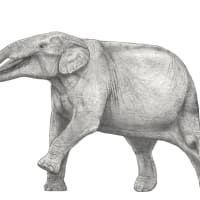
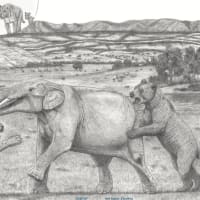

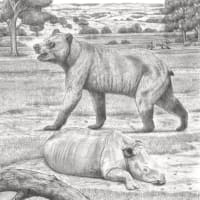


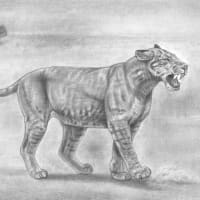
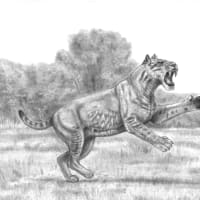


※コメント投稿者のブログIDはブログ作成者のみに通知されます